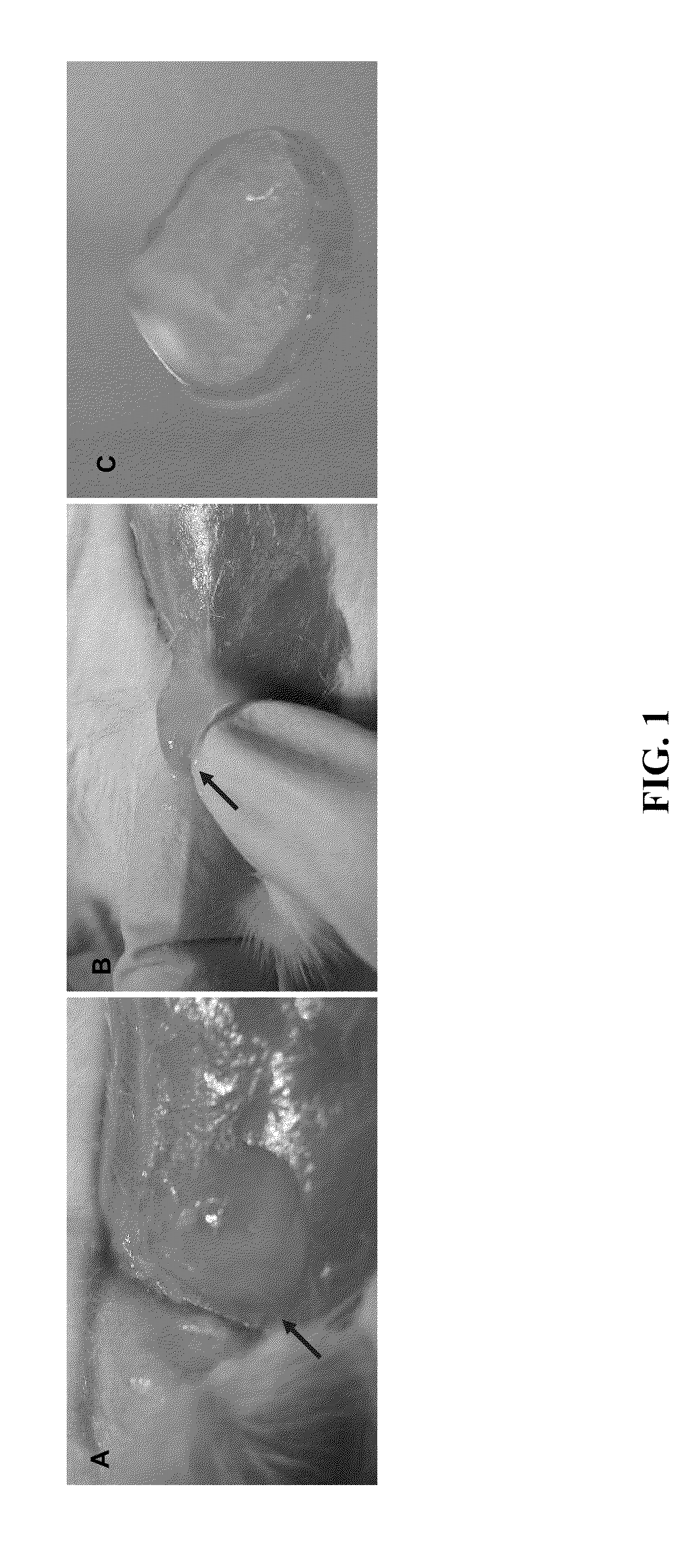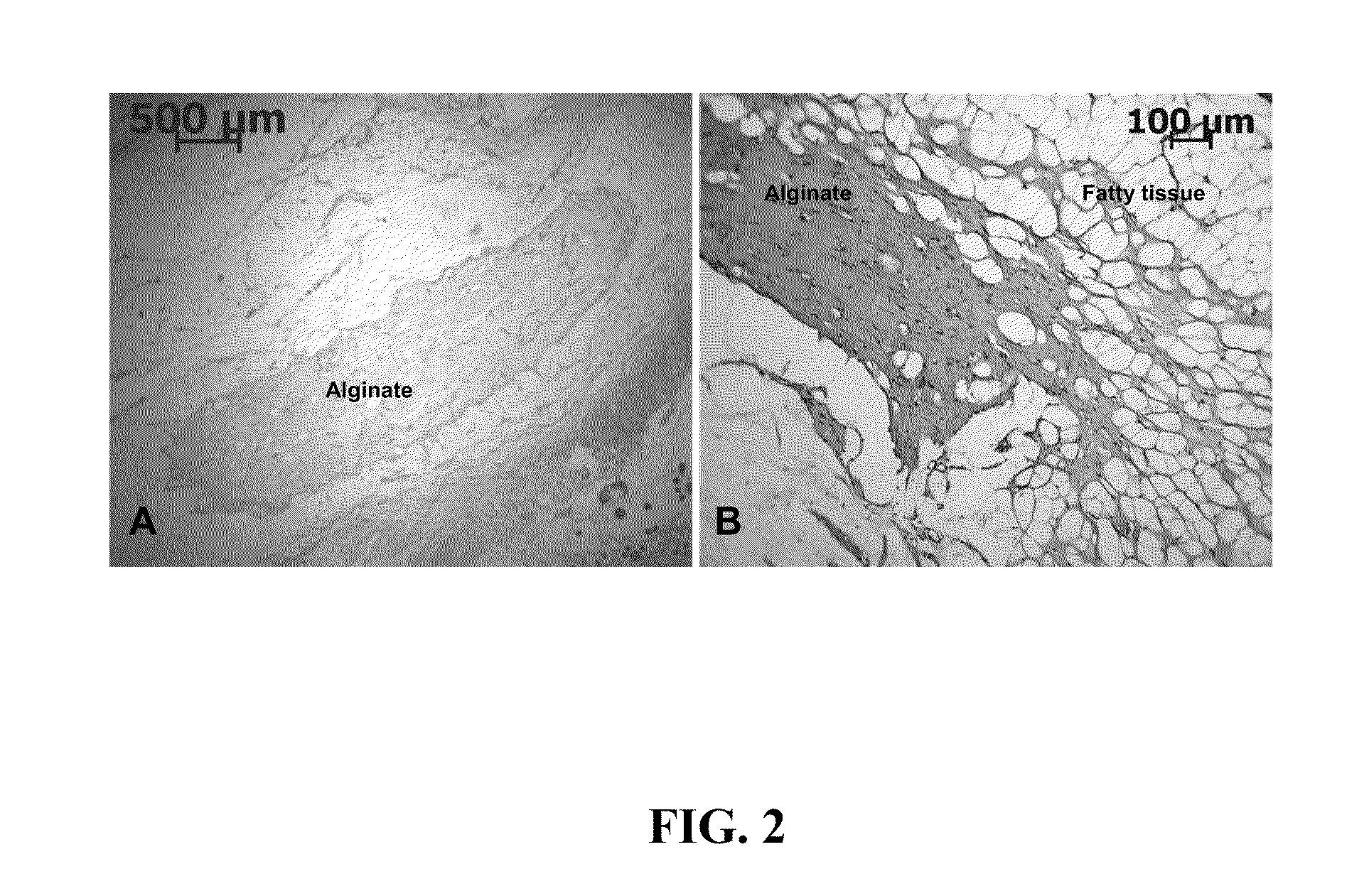When porcine and
bovine collagen is used, however, allergic reactions to these
protein products can occur in humans, so that it is necessary to carry out
allergy tests before use.
Another
disadvantage of collagen preparations is that fact that collagen can migrate from the
injection site to different areas of the
skin, possibly causing redness and swelling there (Millikan, 1989,
Long term safety and
Efficacy with Fibrel in the treatment of cutaneous
scars, J Dermatol Surg Oncol, 15:837-842).
However, a
disadvantage of
hyaluronic acid preparations is that, in order to achieve a visible effect, the
skin must be treated up to three times at short intervals.
This can lead to swellings, which only subside after 1 to 2 days and therefore makes treatment very complex.
Treatment solely with
hyaluronic acid or with preparations that contain substantially hyaluronic acid or hyaluronic acid as a major constituent therefore leads to a rapid disappearance of the visible effect and typically requires the treatment to be repeated comparatively frequently.
However, numerous disadvantageous side-effects have also been found in this connection, such as, for example, the formation of nodules, periodically recurring
cellulitis and the formation of skin ulcers.
Regardless of their advantages, if the alginate is to be crosslinked in situ it is necessary to administer a crosslinker in parallel, which requires a double cannula and accordingly comparatively complex preparation for the administration.
Although gastrooesophageal
reflux disease (“GORD”) (gastroesophageal reflux disease (“
GERD”)) is a normal
physiological phenomenon, it can lead to severe pathophysiological symptoms.
However, they have the
disadvantage that, owing to the
high incidence of recurrence after the acid-suppressing therapy has been stopped, long-term therapy with medicaments is necessary in most patients if conservative long-term
elimination of the symptoms is to be achieved (Bittinger and Messmann, 2003, Neue endoskopische Therapieverfahren bei gastroösophagealer Refluxkrankheit, Z. Gastroenerol 41: 921-8).
Moreover, many patients are not prepared to take medicaments daily for decades to come.
There is the additional problem of the not inconsiderable costs of such long-term therapy with medicaments.
Attempts at supporting the
sphincter musculature by injecting swellable substances as natural conventional filler materials, for example the use of
bovine collagen or Teflon paste, unfortunately failed, however, because the material migrated from the original
injection site over time or was resorbed and accordingly did not permit lasting treatment.
Although
biopolymer therapy continues to appear attractive, despite these results, because of the technically comparatively simple methodology and the results obtained hitherto, the irreversibility of the method (synthetic, non-degradable
polymer) and the migration of the
injected material must be regarded as disadvantageously critical.
However, as described hereinbefore for
wrinkle therapy, the microcapsules or microparticles disclosed in WO 2005 / 105167 on the one hand must be prepared prior to administration in a separate preparation process and on the other hand require a not inconsiderable technical outlay during administration.
Urinary incontinence, which affects more than 6 million people in Germany, is frequently regarded as a taboo subject and is therefore hidden and medical help is scarcely sought.
It is therefore difficult to draw up precise figures relating to the occurrence of
urinary incontinence.
Urine reflux can permanently damage the kidneys through bacterial
contamination, from scarring to the loss of one or both kidneys.
Although vesicoureteral reflux in children passes by itself in time, it leads in some cases to severe urinary tract and
kidney infections and even to
kidney failure.
However, the significant side-effects of such medicaments are often a disadvantage.
In this case, too, however, such treatments are unfortunately mostly associated with unforeseeable side-effects and therefore represent an incalculable risk.
As in the treatment of gastrooesophageal reflux disease (“GORD”), however, the use of injectable collagens has the disadvantageous effect here too that the treatment must frequently be repeated owing to the migration of the material (Khullar et al., 1996, GAX Collagen in the treatment of
urinary incontinence in elderly women: A two year follow up.
Although the condition of vesicoureteral reflux in children can improve or pass by itself in time, as indicated above, it leads in some cases to severe urinary tract and
kidney infections and even to kidney failure.
However, it is found for all the proposed applications that the materials used hitherto for the therapy of urinary incontinence and in particular of vesicoureteral reflux disease have the disadvantage that inflammatory reactions are caused, the materials in some cases migrated, or multiple injections were necessary.
 Login to View More
Login to View More 


